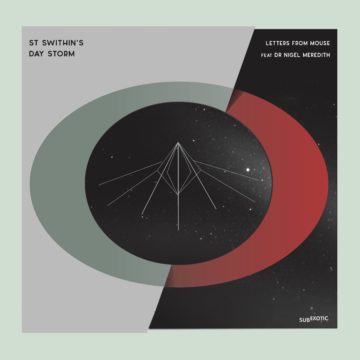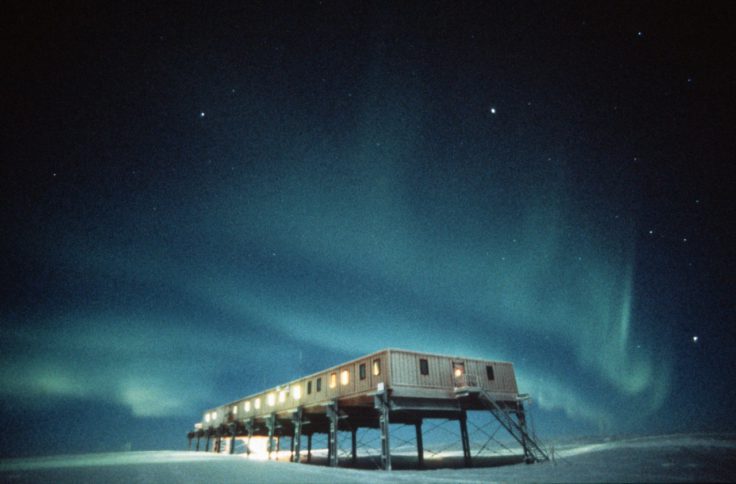A new album inspired by the sounds of radio waves produced by a geomagnetic storm has been released. St Swithin's Day is a collaboration with Steven Anderson and the Letters from Mouse series, which uses modular synths and hardware to create sonic stories based on place-centred audio source material.
Dr Nigel Meredith, a BAS space weather research scientist, has been working with musicians and artists since 2018 to incorporate recordings from Halley into compositions as part of a data-as-art outreach project called Sounds Of Space. For his collaboration with Letters From Mouse, he found a previously unused sequence of space weather recordings from a geomagnetic storm centred on St. Swithin's Day in 2012.

Using a Very Low Frequency receiver at Halley Research Station scientists can pick up radio waves made by our planet. Dr Meredith has used these waves to investigate the science of space weather storms, to help understand potential space weather impacts on the climate system, and for lightning detection. He has also worked extensively on converting them into audible sounds, and has been able to use these amazing natural 'sounds of space' in a number of collaborations.

Speaking about the science behind this phenomena, Dr Meredith explained:
"Space weather events are natural phenomena, driven by the Sun, that can affect technological systems in space and on the ground. The Sun is an active star, with frequent explosions on its surface, sending bursts of charged particles and magnetic fields out into space. If they're directed towards Earth, when they reach us, they can tear open the Earth's magnetic field, giving rise to a geomagnetic storm. Such storms are accompanied by many effects in near-Earth space, including beautiful aurora displays and the generation of natural radio waves known as chorus emissions - so called, because when played back as audio, they often resemble the twittering of birds in the dawn chorus. They also have the power to disrupt our technological systems, including satellites, communications, aviation and power grids."
The album progresses through the phases of the storm - initial, main and recovery - using the distinctive space weather sounds that the Halley receiver produced: spherics, which appear as crackles and pops; whistlers, descending tones caused by lightning strikes; chorus, which evoke birdsong.
Steven Anderson reflected on how the raw sounds were used in the album:
"I really wanted to harness the science behind this. I wanted get the sounds front and centre and really feature them. They're in an adulterated, raw form, but also heavily doctored. A lot of them have been run as samples into the modular system, and mangled in weird and wonderful ways."
Explanations of each sound and the progression of the St Swithin's Day Storm by Dr Meredith are integrated into each of the tracks. They reflect, as well as exploring the potential impacts of space weather on life on earth, in an era when so much relies on satellite infrastructure.
St Swithin's Day Storm will be released on 24th February, via digital platforms and limited edition pressed vinyl.






